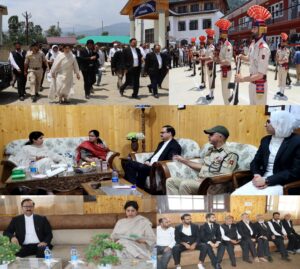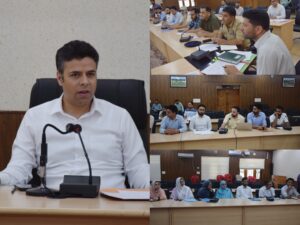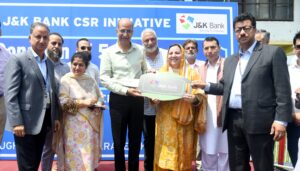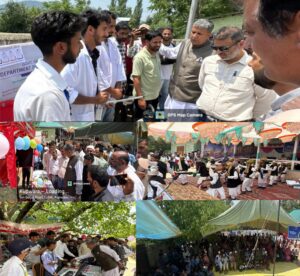Secretary RDD reviews progress on JKRLM initiatives
SRINAGAR, JUNE 23: Secretary, Rural Development Department and Panchayati Raj (RDD&PR), Mohammad Aijaz Asad, today chaired a comprehensive review meeting of Jammu and Kashmir Rural Livelihoods Mission (JKRLM), assessing the implementation status and progress on various key initiatives under the Mission.
The meeting focused on financial progress, recruitment, capacity building, institutional strengthening and the ongoing implementation of flagship Lakhpati Didi initiative.
Mission Director, JKRLM, Dr. Shubhra Sharma, Joint Director Planning, Kamal Kumar Sharma and State Programme Managers were present during the deliberations.
The Secretary was informed that the Mission has successfully formed 94,000 Self-Help Groups (SHGs), covering 7.55 lakh rural households across the Union Territory. Notably, J&K ranks among the top-performing States/UTs in key parameters such as LOKOS profile capturing and Cluster Level Federation (CLF) transactions, securing 1st position in CLF profiling, 2nd in Village Organization profiling and 4th in SHG profile capturing.
Commending the progress made, the Secretary urged the Mission team to intensify efforts in lagging areas and leverage the full potential of SHGs to improve rural livelihoods. He stressed the importance of strong linkages between SHGs and financial institutions to enhance access to gainful employment and sustainable income opportunities for women.
Under the Lakhpati Didi initiative, the Secretary noted that over 1.84 lakh women have already achieved the Lakhpati Didi status in the past six months. He stated that efforts are underway to support a cumulative total of 2.3 lakh women in achieving this milestone by the end of the current month.
These women are engaged in diverse sectors including agriculture, animal husbandry, manufacturing, services and trade, with support from convergence departments such as Agriculture, Animal Husbandry, Fisheries and MSME.
The Secretary also enquired about the additional interventions, beyond routine SHG-bank linkages, being undertaken to enable sustainable income generation for rural women.
The meeting further reviewed the functioning of Community Managed Training Centres (CMTCs). It was informed that six CMTCs have been established to serve as integrated district-level hubs for training and thematic awareness. For FY 2025–26, plans are in place to establish CMTCs in 14 districts.
The Secretary directed the officials to coordinate with the concerned Deputy Commissioners to identify and allocate suitable government buildings for these centres. He also asked to ensure timely provisioning of essential infrastructure, including training halls, kitchens and laboratories.
Recognizing the role of Digi Sakhis and Bank Sakhis, the Secretary appreciated their contribution in enhancing the financial inclusion by acting as banking correspondents in rural areas.
The Secretary also called for a detailed analysis of self-sustaining SHGs and underlined the need to increase their share across the UT. He reviewed the performance of both farm and non-farm livelihood interventions under JKRLM.
It was noted that the Mahila Kisan Sashaktikaran Pariyojana (MKSP) surpassed expectations, covering 123% of targeted women farmers and 140% in livestock interventions during FY 2024–25. In the non-farm sector, initiatives such as the Start-up Village Entrepreneurship Programme (SVEP) and Micro Enterprise Development (MED) achieved 100% target coverage, with significant utilization of funds.
Emphasizing the importance of real-time data tracking, field-level monitoring and impact assessment, the Secretary called for sustained efforts to ensure that the mission continues to deliver measurable and transformative outcomes.
Mission Director, JKRLM, also presented a comprehensive overview of the ongoing initiatives and achievements of the Mission.






